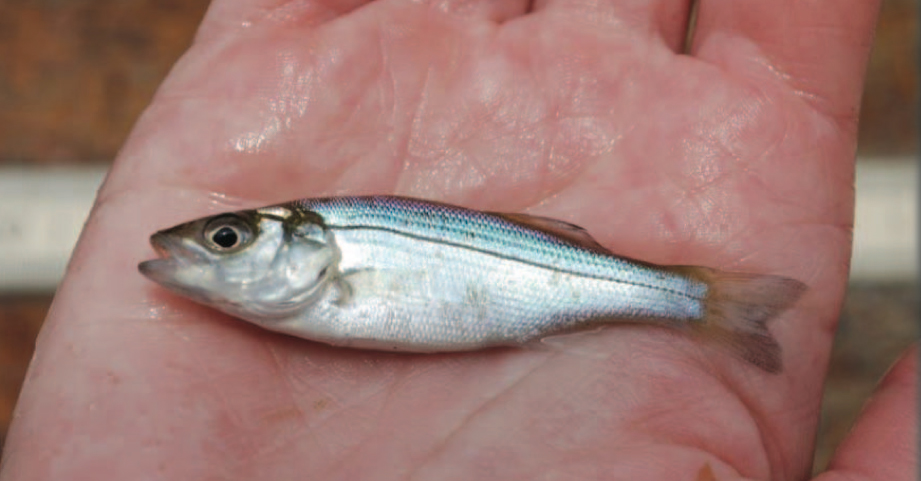|
Description: Striped bass are native to the Atlantic coastline of North America from the St. Lawrence River into the Gulf of Mexico to Louisiana. They are anadromous fish that migrate between fresh and salt water. Spawning takes place in fresh water.[2]
Location and Habitat: Self renewing inland stocks of striped bass generally require two major
types of habitat: (1) riverine habitat for reproduction; and (2) lacustrine
or estuarine habitat for foraging, growth, and development by the larvae,
juveniles, and adults.[3]
Temperature: Spawning: Adults usually initiate spawning runs when temperatures reach
15 to 19° C (59 to 62° F). Both the initiation and duration of
spawning are temperature-dependent, and sudden drops in water temperature may interrupt spawning. Larval: Mean time between hatching
and yolk absorption was 5.1 days at 21° C (69.8° F) and 8.3 days at 15° C
(59° F) The duration of larval development (finfold plus post-finfold state)
was about 24 days at 21° C (69.8° F) and 68 days at 15° C (59° F). Larvae may
live within a temperature range of 12.8 to 23.9° C (55 to 75° F), but high
mortality can be expected at 23.9° C (75° F) and above.
Temperatures below 10° C (50° F) and above 23° C (73.4° F) are apparently
lethal to larvae. [4]
Turbidity and Dissolved Oxygen: Reports indicate that striped bass
have a relatively high tolerance to silt-laden and turbid waters and that high concentrations of suspended sediments
likely do not affect the eggs or larvae.
Sediment levels up to 500 mg/1 did not affect the hatching success of
eggs. However, sediment levels
of 1,000 mg/1 significantly reduced hatching success. Levels over 100 mg/1 delayed hatching several hours. Hatch of
striped eggs was not significantly affected by suspended sediment concentrations ranging from 20 to 2,300 mg/1, but embryo development was slowed significantly at concentrations above 1,300 mg/1.[5]
Salinity: Albrecht (1964) concluded that low salinity (920 to 948 mg/1 chlorides)
enhanced egg and larval survival and that moderate salinity (4,595 to
4,740 mg/1 chlorides) was not detrimental. [6]
Reproduction: Streams suitable as striped bass reproductive habitat generally have a
large volume of swift, turbulent water flowing over a substrate of rock and/or
fine gravel. Eggs are deposited near the water surface.
The incubation period is about 34 hours at 21° C (70° F), 51.8 hours and 62 hours at 18° C (64.4° F) and 15.0° C (59.0° F),
respectively, and about 70 to 74 hours at 14.4 to 15.6° C
(58 to 60° F). Eggs generally hatch in riverine habitat, initial growth and
development of larvae take place in the stream, and subsequent growth and
development of larvae, juveniles, and adults occur in lacustrine habitat.[7]
Food: Adults also tend to be opportunistic feeders, but landlocked populations usually select clupeids or soft-rayed fish
over other available food items. Threadfin shad was the
primary food item, both in frequency of occurrence and total volume, of adults
from the lower Colorado River and Lake Powell. [8]
Risk:
| 